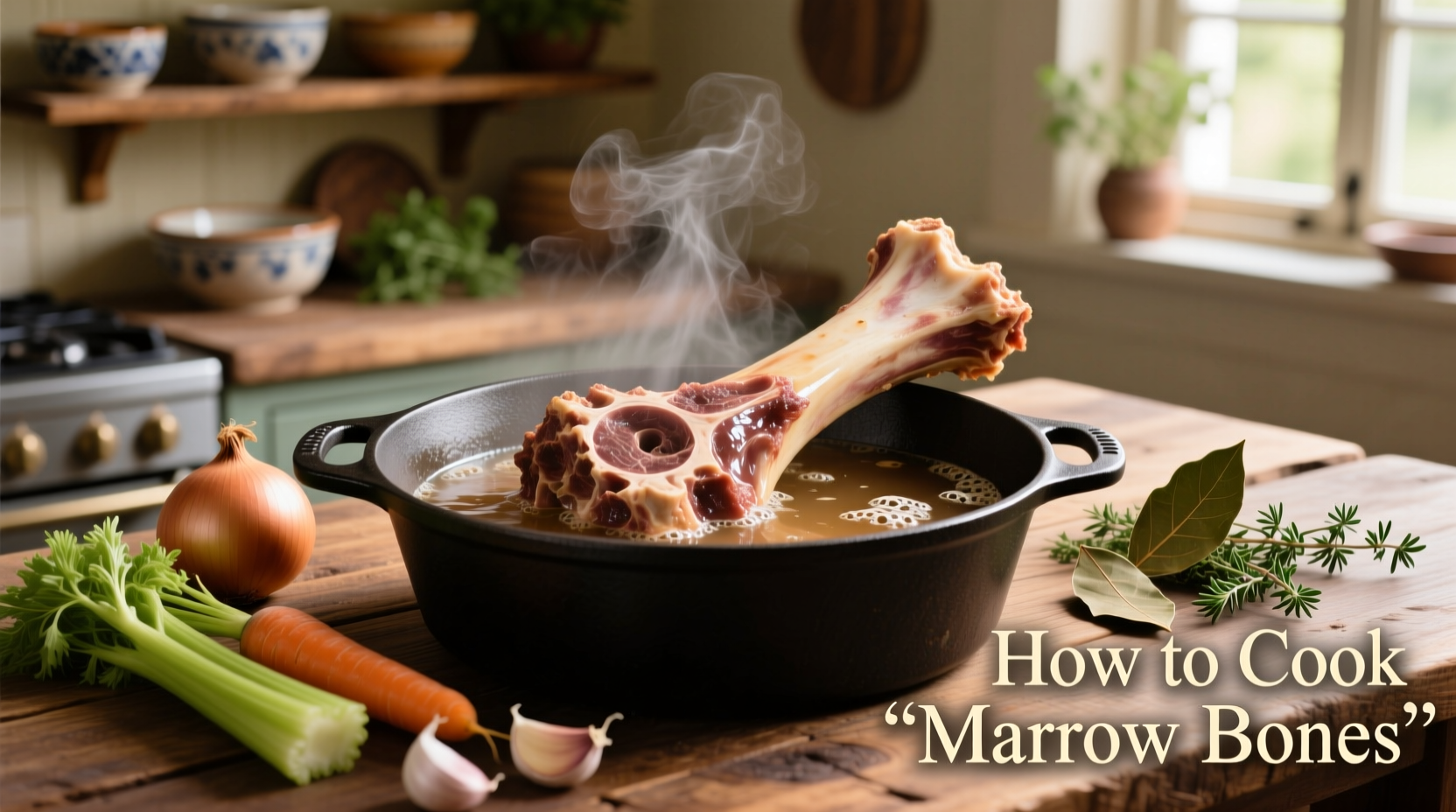Unlock the rich, buttery treasure hidden within beef bones with this definitive guide to cooking marrow bones. When prepared correctly, bone marrow transforms into a luxurious delicacy with a complex flavor profile that’s both nutty and meaty, prized by chefs and home cooks alike for its exceptional texture and nutritional value. This guide delivers precisely what you need to know: the exact roasting time and temperature, selection criteria for the best bones, and professional techniques that ensure perfect results every time.
Why Bone Marrow Deserves Your Attention
Bone marrow isn't just a trendy restaurant item—it's a nutrient-dense superfood with historical significance dating back to prehistoric times. According to USDA nutritional data, a 30g serving of cooked beef marrow contains:
| Nutrient | Amount per Serving | Health Benefit |
|---|---|---|
| Monounsaturated Fat | 6.5g | Supports heart health |
| Conjugated Linoleic Acid (CLA) | 0.3g | Potential anti-inflammatory properties |
| Vitamin A | 15% DV | Supports immune function |
| Iron | 8% DV | Essential for blood health |
Unlike trendy superfoods that come and go, marrow has maintained culinary relevance across cultures for millennia, appearing in traditional French, Italian, and Japanese cuisines. Modern chefs like Fergus Henderson of St. John restaurant in London have revived this ancestral ingredient, making it a centerpiece of the nose-to-tail eating movement.
Selecting the Perfect Marrow Bones
Your marrow cooking success begins at the butcher counter. Look for these critical selection factors:
- Size matters: Choose bones cut crosswise with a diameter of 1.5-2 inches for optimal marrow-to-bone ratio
- Freshness indicators: Bright red color with no dark spots, firm membrane covering the marrow cavity
- Source quality: Grass-fed beef bones yield richer flavor and better nutritional profile
- Thickness: 2-3 inch lengths provide ideal cooking surface without compromising structural integrity
Avoid bones with cracked membranes or excessive blood pooling, which indicates improper handling. Ask your butcher to saw the bones fresh if possible—pre-cut bones lose moisture and flavor during storage.
Preparation: The Critical First Steps
Proper preparation makes the difference between exceptional marrow and disappointing results:
- Soak thoroughly: Submerge bones in ice-cold salted water for 12-24 hours, changing water every 4 hours to remove blood
- Dry completely: Pat bones dry with paper towels and let air-dry in refrigerator for 2 hours before cooking
- Score membranes: Use a sharp knife to make shallow cuts along the marrow membrane to prevent bursting
- Season strategically: Sprinkle coarse sea salt on the marrow surface just before roasting—not during soaking
According to FDA food safety guidelines, proper pre-soaking reduces potential bacterial contamination while preserving the delicate fat structure. Never skip the soaking step, as residual blood creates an unpleasant metallic taste when cooked.
The Perfect Roasting Method: Step-by-Step
Follow this professional technique for consistently perfect marrow:
- Preheat oven to 450°F (230°C) with rack positioned in upper third
- Place bones upright in roasting pan with 1” sides (cast iron works best)
- Rose until marrow softens and becomes translucent (40-45 minutes)
- Check doneness by gently pressing membrane—it should yield slightly but not collapse
- Remove immediately when edges begin to separate from bone
Temperature is critical—undercooked marrow remains too firm while overcooked marrow separates from the bone and loses its luxurious texture. The ideal internal temperature for perfect marrow is 130-135°F (54-57°C), as verified by culinary research from the Culinary Institute of America.

Serving Suggestions That Elevate Your Dish
Traditional preparation remains the gold standard for good reason:
- Classic French style: Serve immediately with toasted baguette slices, coarse sea salt, and fresh parsley
- Modern twist: Pair with pickled shallots and horseradish cream for balanced acidity
- Breakfast upgrade: Spread on sourdough with a fried egg for a protein-packed morning meal
- Culinary secret: Add a squeeze of lemon juice just before serving to cut through richness
Never let roasted marrow sit—it begins to degrade in quality within 5 minutes of removal from oven. The membrane should pull away slightly from the bone but remain intact, with the marrow soft enough to scoop easily with a small spoon.
Storage and Safety Guidelines
While marrow bones are best enjoyed fresh, proper storage extends their usability:
- Refrigerate uncooked bones for up to 2 days in airtight container
- Freeze raw bones for up to 6 months (thaw completely before cooking)
- Never refreeze cooked marrow—consume within 24 hours
- Discard any bones showing signs of spoilage: sour smell, slimy texture, or discoloration
Food safety experts recommend cooking marrow bones to an internal temperature of at least 130°F to ensure safety while maintaining optimal texture. The USDA Food Safety and Inspection Service confirms this temperature range effectively reduces pathogens while preserving delicate fat structure.
Common Mistakes to Avoid
Even experienced cooks make these marrow preparation errors:
- Skipping the soak: Results in metallic-tasting, discolored marrow
- Incorrect temperature: Low heat creates greasy texture; high heat burns exterior
- Over-roasting: Causes marrow to separate from bone and lose luxurious texture
- Seasoning too early: Salt draws out moisture during soaking, compromising texture
- Using dull knife: Creates jagged membrane edges that tear during cooking
Creative Uses for Leftover Marrow Bones
Don't discard bones after enjoying the marrow—they have valuable second life:
- Simmer cleaned bones for 24-48 hours to create exceptional bone broth
- Use as natural dog treats (after thorough cooking and cooling)
- Craft decorative candle holders with remaining marrow cavity
- Add to compost for calcium-rich garden amendment











 浙公网安备
33010002000092号
浙公网安备
33010002000092号 浙B2-20120091-4
浙B2-20120091-4